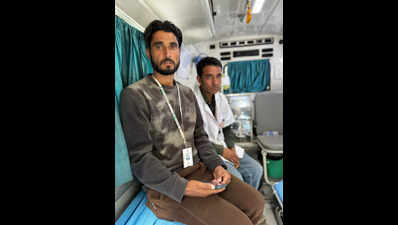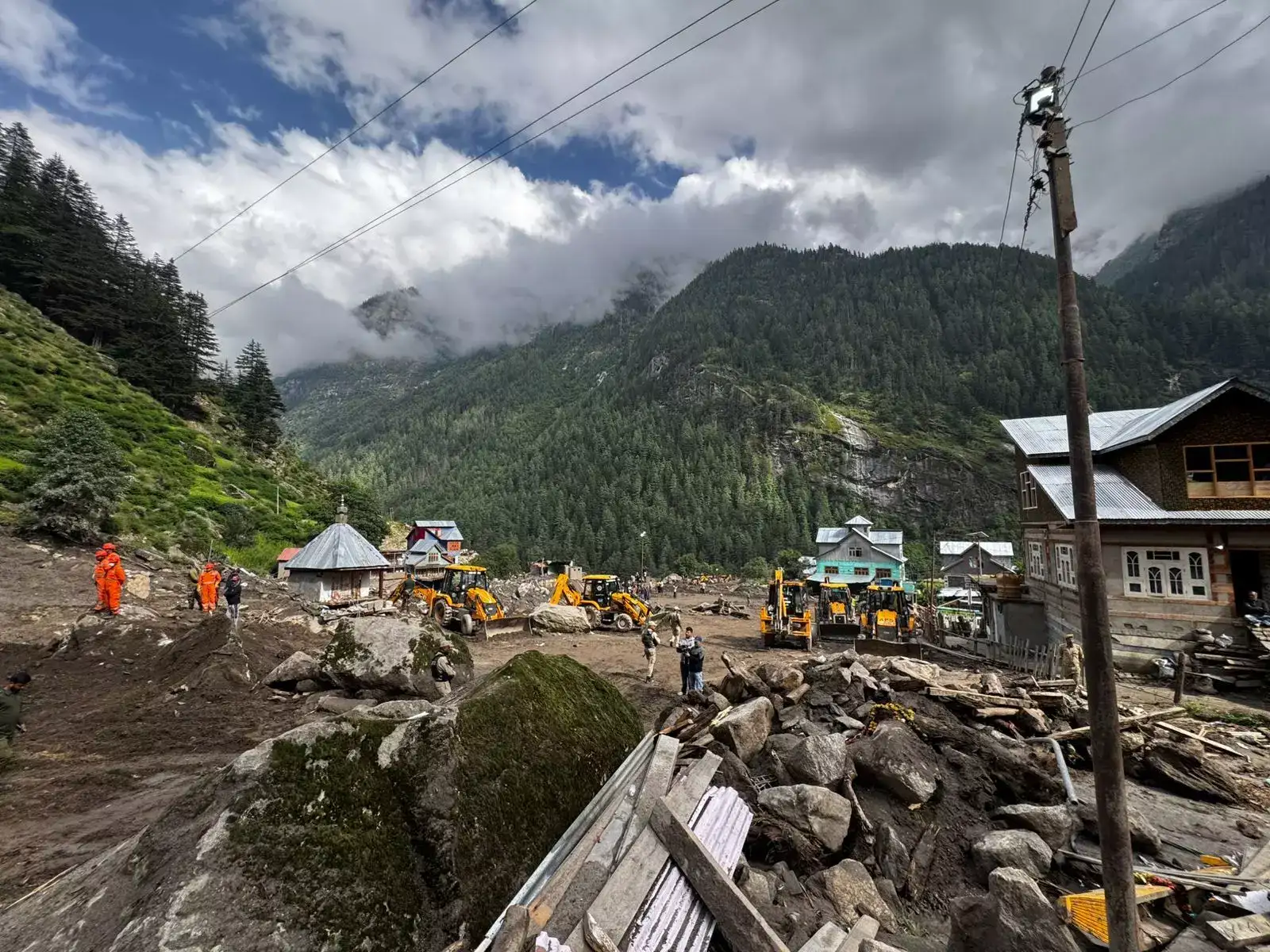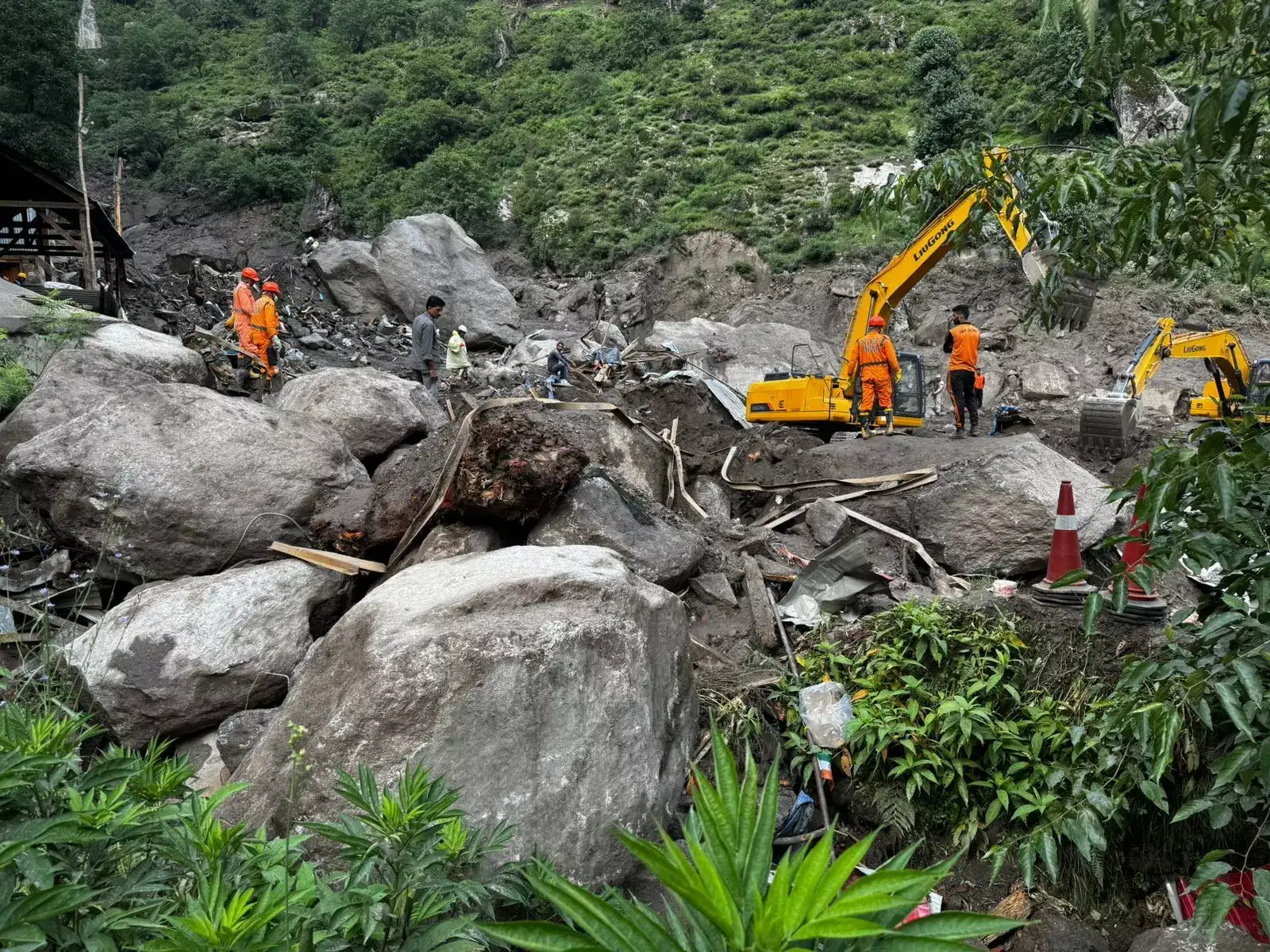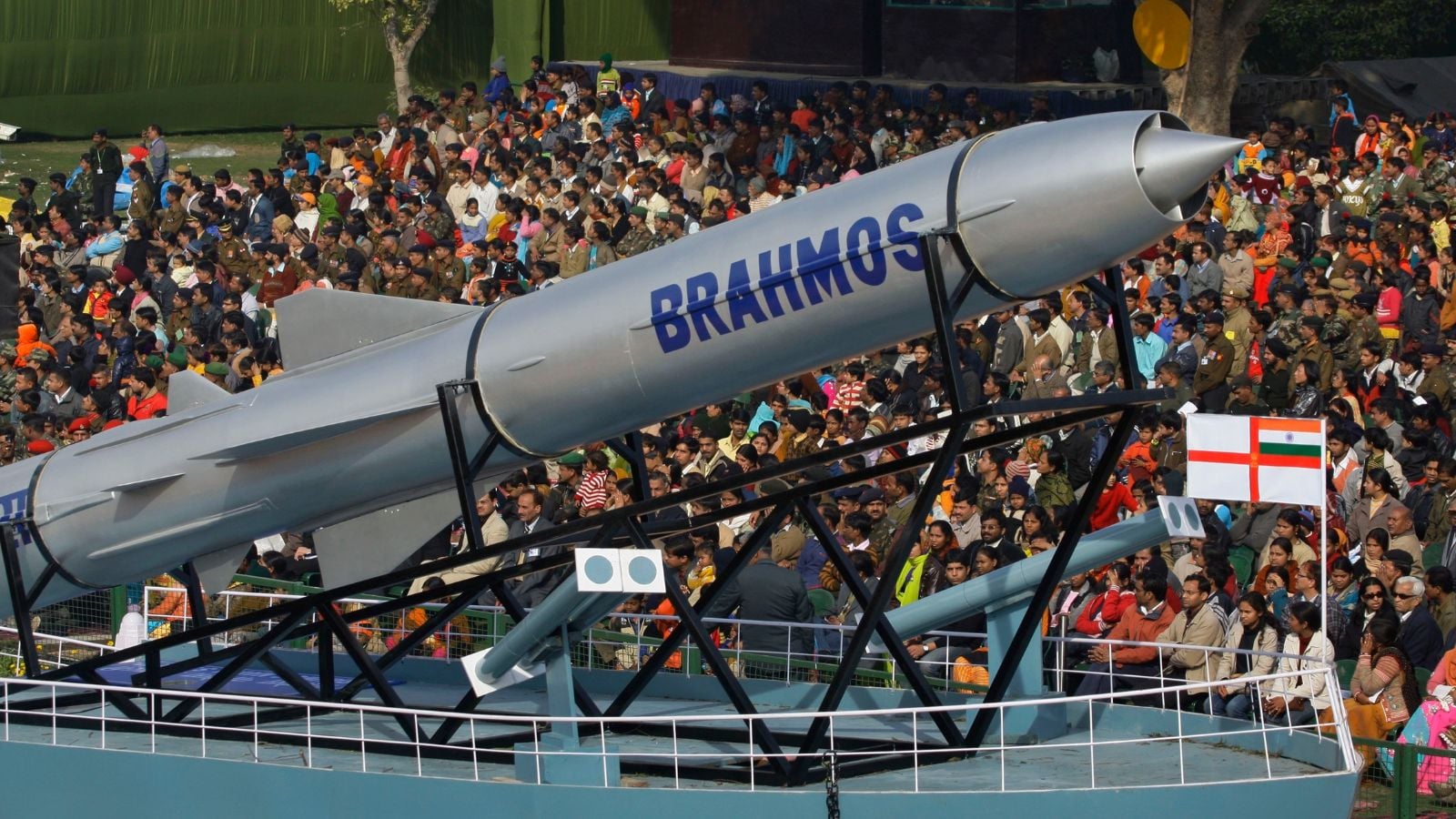ARTICLE AD BOX

For nearly two hours Arif Rashid worked alone, hauling survivors on his shoulders, dragging the dead into lines by the roadside and loading the injured into his ambulance.
CHASOTI(KISHTWAR): When the wall of water tore down the slopes above Chasoti at 12.30pm on August 14, ambulance driver Arif Rashid, 32, felt the sludge clutch at his knees and boulders roll past him.
For a moment he thought he would be dragged under. He clawed his way out and ran, thinking only of survival. Ten minutes later, when the torrent eased and the roar subsided, he turned back. In the silence that followed, he could hear something else — the cries of those still buried in the wreckage.The bridge across the stream had disappeared. Dust and mist hung over the gorge. Pilgrims were scattered in the debris where makeshift eateries and houses had stood minutes earlier.
Rashid saw an elderly woman with only her arms and face visible above the earth and pulled her out with his hands. That was the beginning. As he carried survivors out of the mud, Rashid believed his colleague Sunil Kumar, 25, had been swallowed by the flood. Sunil, also a Class 12 pass-out and his junior from Atholi government school, had last been seen near the bridge before the torrent struck. Rashid had no time to search.
“I thought he was gone,” he said. “There were too many people to lift.”

For nearly two hours he worked alone, hauling survivors on his shoulders, dragging the dead into lines by the roadside and loading the injured into his ambulance. He drove them a km down a fractured track to where reinforcements waited, returned, and went back in again. Then, Sunil managed to call. He had survived because he was attending to a pilgrim with breathing trouble on the far side.
When he rejoined Rashid, there was no embrace. The two bent back to work, lifting bodies, steadying the wounded, and loading them into the single ambulance available in Chasoti. By nightfall, when NDRF and Army rescue teams reached him, he had ferried more than 30 people. He did not stop.For the next three days they did little else. They drove patients to Gulabgarh hospitals, returned immediately to the wreckage, and went back out again.
Rashid slept on the grass when he slept at all. Sunil hardly closed his eyes, his face still carrying the daze of the flood. Their ambulance was caked in brown, the stretcher worn from constant use. Rashid stopped counting after 60 patients. Local officials later confirmed the number was higher.

Their seniors said the men had done more than transport the injured. “They were the only link on the ground, but they also had the presence of mind to keep mobilising help,” said Mushtaq Ahmed, 39, state head of 108 services.
Tanveer Ahmad Malik, 28, area operations manager for Jammu district, saw how differently the two carried the aftermath. “Arif has begun to come to terms with it,” he said. “But Sunil is still dazed.
You can see it in his face — even while eating, the disorientation shows.” Rashid, is from Kijiyai village about 35km downhill. A Class 12 pass-out, he had once driven heavy earthmovers before joining the 108 ambulance service in 2022.
For him, the posting at Chasoti comes during the 45-odd days of the Machail Mata Yatra season. The rest of the year, he serves elsewhere in the district. The Rs 14,000 monthly salary was steady, and he believed the work would be safer. “I thought an ambulance job meant less risk,” he said quietly.
“Now I know it means something else — you don’t get to stand aside.”

Rashid, unmarried and living with his parents, brother and sister-in-law in Kishtwar town, had never imagined he would be seen as anything more than a driver.
Yet survivors now speak of him as the hero of Machail Yatra, the man who refused to leave until the last body was carried out. At home he sits with his family, able to eat and talk through the days just passed. Beside him, Sunil often remains silent, food untouched.
His body is present, but his mind still lingers in the gorge where the water came down without warning. The hamlet itself had been reduced to silence. Chasoti, so remote it does not appear on Google Maps, was known to pilgrims as the last halt before the shrine, with a community kitchen and a police post.
After the cloudburst, both were swept away. “The place went silent,” Rashid said. “There was nothing left.” Through that silence, the wail of a single ambulance siren became the only sound of continuity. On Monday afternoon, Rashid spoke to TOI outside his ambulance in Chasoti, the vehicle floor still brown from three days of continuous work. Around 2pm he broke off the conversation abruptly. A full body and a severed leg had just been pulled from the rubble, and he had to return to work.



.png)
.png)
.png)
















 1 hour ago
3
1 hour ago
3









 English (US) ·
English (US) ·